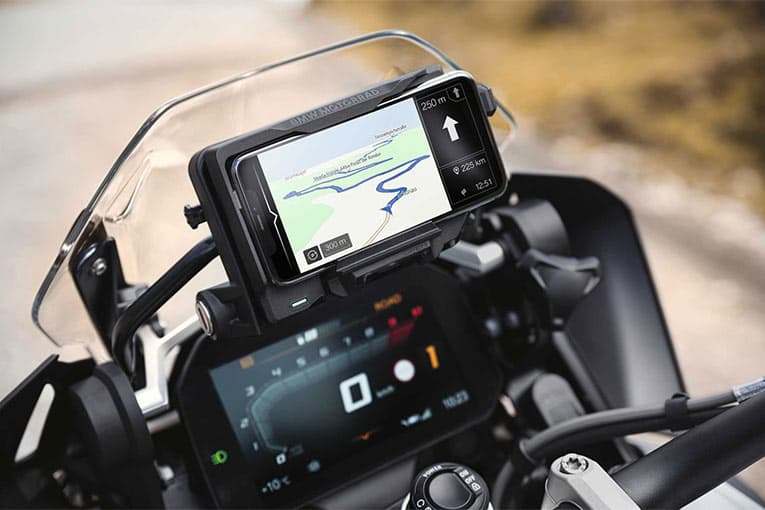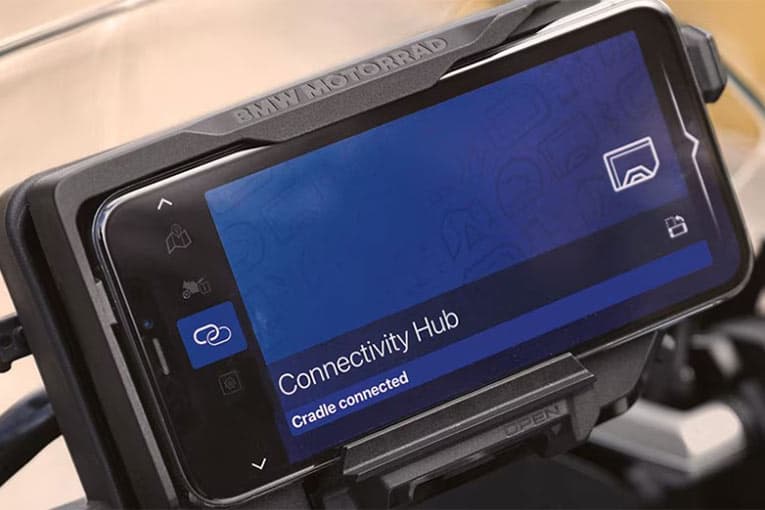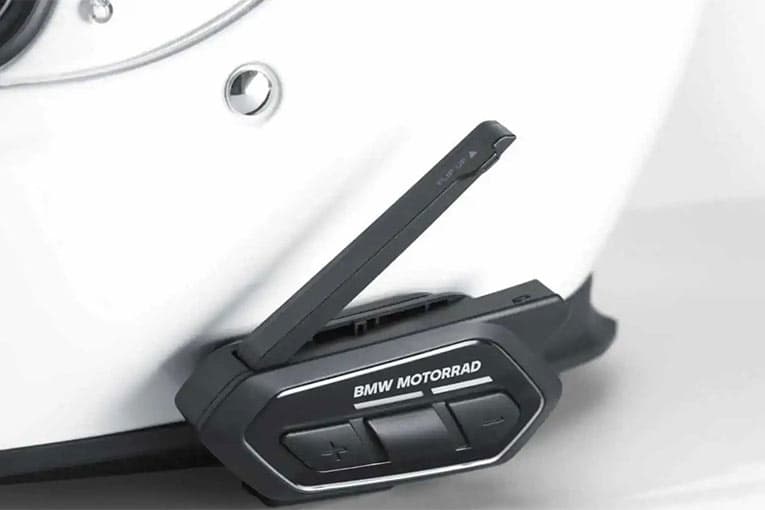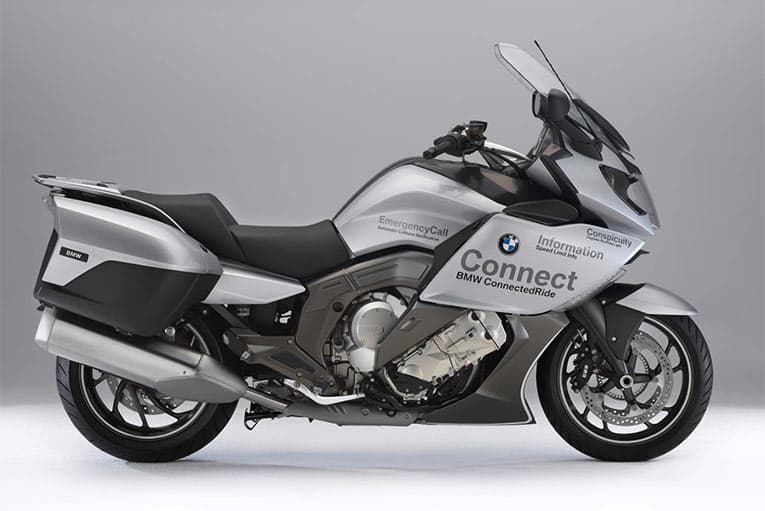ConnectedRide – a research project being run by BMW Motorrad and BMW Group Research and Technology – indicates developments which could advance safety much further. Assistance systems based on vehicle-to-vehicle communication make motorcycling much safer still: these are to be installed in serial production motorcycles by BMW Motorrad in the future. In connection with this research work, BMW Motorrad is the only motorcycle manufacturer involved in a large-scale field test with five vehicles.
BMW Motorrad already presented six elements of the ConnectedRide program in June 2009 at the International Technical Conference on the Enhanced Safety of Vehicles” or ESV in Stuttgart. In addition to the cross traffic and traffic light phase assistant, BMW developers designed three warning systems especially for motorcyclists: for bad weather conditions, obstacles and approaching emergency vehicles. The fourth system to be presented by BMW Motorrad was the draft for an electronic brake light which responds to sudden brake manoeuvres in dense traffic lines, automatically relaying the information to the rear in a fraction of a second. An additional assistance system was presented in May 2011, the left turn assistant, along with the most recent stage of development in this area: the overtaking assistant.

The cross traffic assistant analyses road users approaching a junction, the priority situation and the probability of a collision as well as assessing the response of car drivers required to wait. A display in the cockpit indicates the traffic regulations to the car driver – for example in the case of a potential failure to give way. If the driver does not respond appropriately, he is warned of the risk of collision in stages – in visual, tactile and acoustic form. On the motorcycle, the road light is gradually modulated, light intensity is increased and additional LED strobes at the side of the motorcycle are activated so as to widen the silhouette and thereby increase notice ability in the case of an increasing risk of collision. If a collision is imminent the motorcycle horn is sounded automatically.
The traffic light phase assistant allows the traffic light system to communicate with the motorcycle. If the traffic lights are set to red when the motorcycle arrives at the intersection at an unchanged speed, the rider would receive this information early enough via the instrument panel to be able to brake gently. The assistant is also able to display a speed at which he could reach the traffic lights during the green cycle.
The bad weather warning gives the motorcyclists a visual indication in the instrument panel – optionally also a voice message in the BMW Motorrad Communication System – to provide early warning of a route section with weather conditions such as fog, rain, snow or black ice. The assistant also gives details of approximately when the rider can be expected to encounter these conditions. As the trigger algorithm, researchers have in mind a certain number of vehicles switching on their fog lamps for example. This information, combined with the exterior temperature of the vehicles in question, can be used to infer snow or hail. Other sources of data include rain sensors, regulatory systems such as DSC and rear fog lamps switched on.

The obstacle warning also indicates to the motorcyclist by means of a visual signal in the instrument panel – also with optional voice message – that an obstacle is to be expected on the road. This might be oil or chippings on the road, or a broken-down vehicle at the roadside. The warning also includes details of approximately how far away the obstacle is. The warning and location of the danger could be transmitted by the vehicle or vehicles ahead to the vehicles behind.
The emergency vehicle warning system provides a visual display in the instrument panel which gives the rider early indication of an approaching emergency vehicle. A clear symbol and a voice message warn the rider, also providing details of the distance.
The idea behind the electronic brake light is the fact that the brake lights of a vehicle subjected to sudden heavy braking may possibly be hidden by the vehicles behind it. These results in a delayed reaction which can cause rear-end collisions. In order to inform traffic to the rear as early as possible that a brake manoeuvre has been carried out, this information is communicated to other road users by means of vehicle-to-vehicle communication as part of the electronic brake light system. The latter receive this information via the instrument panel and communication system.

An additional left turn assistant takes into account the particular risk potential of this traffic situation to the motorcyclist. Additional LEDs in the rear mirror casings and automatic high beam activation make the motor-cycles more visible to traffic turning off to the left. Calculation of the collision risk is based on data transmitted by vehicle-to-vehicle communication. If there is an acute risk of collision, simultaneous and automatic brake intervention in the car prevents it from turning off to the left.
The overtaking assistant makes an overtaking motorcycle more easily visible to other road users. The manoeuvre is detected by the system of sensors already in serial production in conjunction with Race ABS and DTC. If the vehicle ahead moves out to overtake at the same time as the motor-cycle because the driver has overlooked the motorcyclist or wrongly estimated his speed, the motorcyclist is in danger. Additional LEDs in the turn indicator are used to intensify the signalling effect, making the motor-cycle more visible within the car driver’s peripheral field of vision. This significantly increases the probability of the driver noticing the motorcycle before it disappears into the blind spot.









